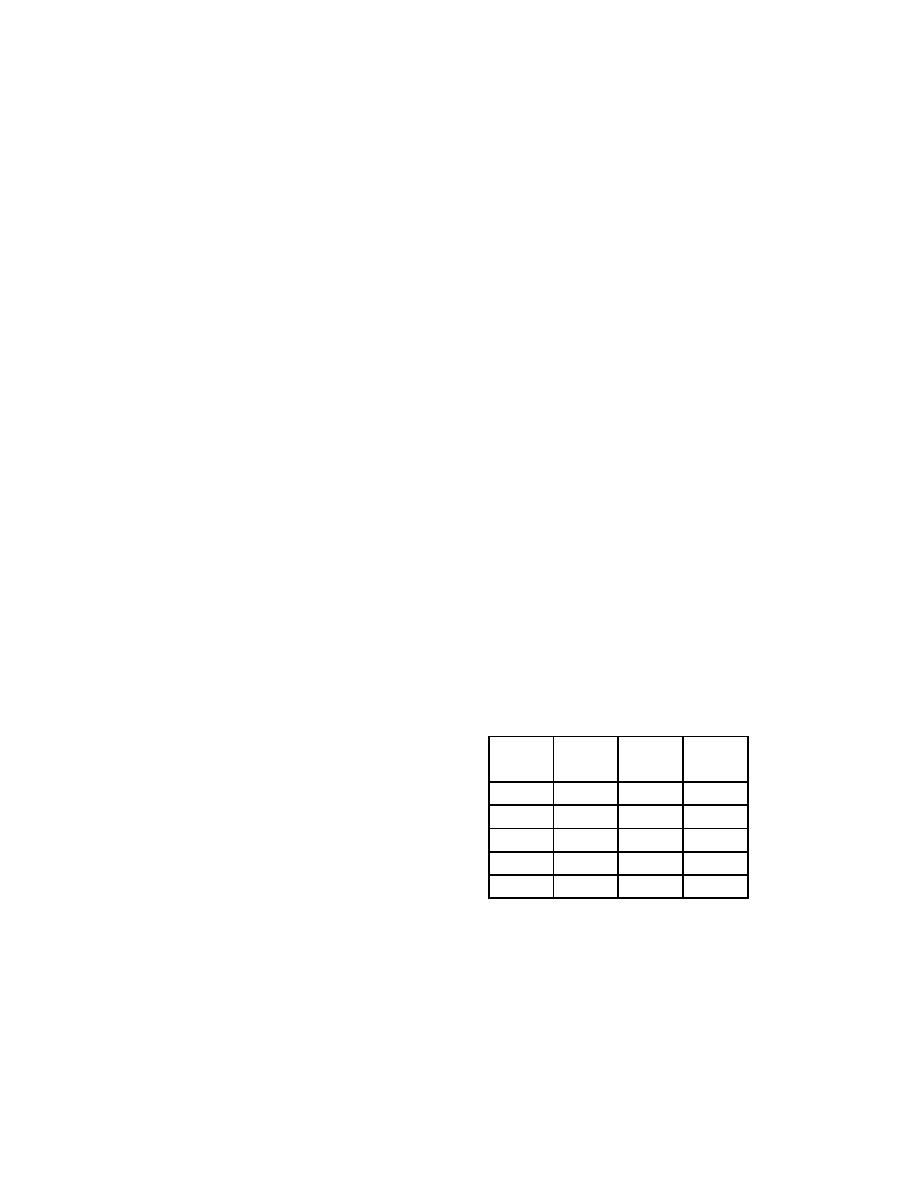 |
|||
|
|
|||
|
Page Title:
Minimum Required Free Gas Volume per Kilogram |
|
||
| ||||||||||
|
|  DOE-STD-3013-2004
correspondingly reduced and the pressure decreases. The maximum pressure occurs at the bulk
density at which the convenience can is just full. In this case, the maximum bounding pressure
is 690 psia, or 675 psig. Note that this particular model demonstrates compliance with Criterion
6.3.2.3 for all material densities and would eliminate the need to measure density or determine
free gas volume. The development and use of such a model will be governed by the Quality
Assurance program applicable to the packaging site (and acceptable to the storing site) in terms
of regression coefficients and confidence levels.
B.3.4.4
Minimum Required Free Gas Volume per Kilogram
Assume now that we wish to find the minimum required free gas volume of a container holding
1 kg of material that has a heat generation rate of HS w and a moisture content of 0.5 wt%.
The other parameters are as assumed before, except that an evaluation temperature of 211C
will be used, representing a configuration in which the storage package is in a 9975
transportation package in the sun. The resulting pressure is required to be 714 psia (699 psig).
714 = 23.2 + 0.67*1*0.5*484/Vmin + 7.517x10-5* HS *50*484/Vmin
After rearranging, the equation becomes
Vmin (714-23.2) =.67*1*0.5*484+ 7.517x10-5* HS *50*484
V1 = 0.2348 + 0.00263HS l.
Based on the previous example, the worst case
Table B-4
is when the maximum loading just fills the
Minimum Free Gas Volumes
innermost container. For that case, HS will be
SHGR
Loading
Vmin
FGV*
w/kg
kg
l/kg
l
19/5, or 3.8 w/kg oxide, and Vmin will be 0.246 l
4.3
5
0.246
1.230
per kilogram of material, or 1.230 l for the 5 kg
5.4
4
0.249
0.996
loading. Table B-4 provides results for other
7.2
3
0.254
0.762
heat generation rates. In each case, the limiting
10.8
2
0.263
0.526
combination of heat generation and mass
21.5
1
0.291
0.291
* FGV is the minimum container free gas
loading are used to determine the total free gas
volume for the mass loading indicated
volume required. For the BNFL container
system, a free gas volume of 0.996 l
corresponds to a density ratio of 0.656, which is larger than density ratios observed in the shelf
life items. That, in turn, implies that such a value is conservative. For simplicity, a value of 0.25
is used in the Standard.
63
|
|
Privacy Statement - Press Release - Copyright Information. - Contact Us |